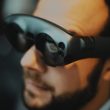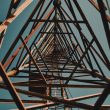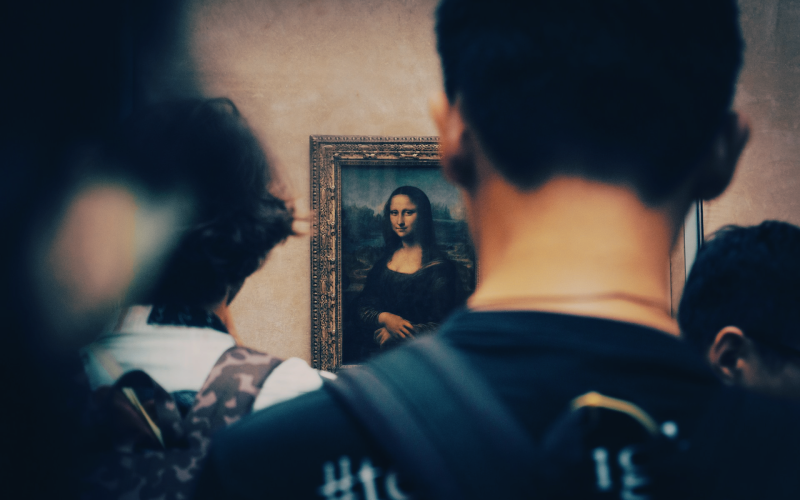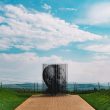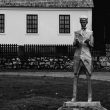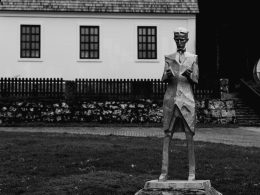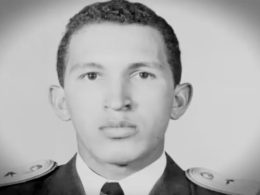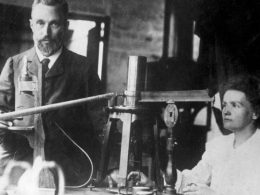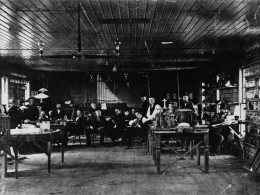Table of Contents Show
I. The Roots of Genius: Early Life in Vinci
Leonardo da Vinci was born on April 15, 1452, in the small town of Vinci, nestled in the rolling hills of Tuscany. He was the illegitimate son of Ser Piero, a notary, and a peasant woman named Caterina. From the moment of his birth, Leonardo’s life was shaped by the dualities of his origins: the privilege of his father’s status and the humility of his mother’s background. This intersection of worlds would profoundly influence his thinking, making him a man who was equally comfortable in the courts of princes and the fields of laborers.
As a child, Leonardo exhibited an insatiable curiosity and a remarkable ability to observe the world around him. The landscape of Vinci, with its rivers, forests, and mountains, became his first classroom. Here, he would study the flight of birds, the flow of water, and the anatomy of plants and animals. His early experiences in nature cultivated in him a deep appreciation for the interconnectedness of all things, a theme that would permeate his later work.
At the age of 14, Leonardo’s life took a decisive turn when he was apprenticed to Andrea del Verrocchio, one of Florence’s leading artists and a master of the arts of painting, sculpture, and metalworking. In Verrocchio’s workshop, Leonardo’s innate talents were honed by rigorous training. He learned the techniques of drawing, the principles of perspective, and the secrets of mixing pigments. More importantly, he was exposed to the idea that art and science were not separate disciplines but rather two sides of the same coin—a belief that would become the cornerstone of his philosophy.
Florence in the 15th century was a city teeming with creativity and intellectual fervor. It was here that Leonardo encountered the works of the great humanists, mathematicians, and philosophers who were rediscovering the knowledge of the ancient world. This vibrant intellectual environment nurtured Leonardo’s burgeoning genius and set him on a path of lifelong inquiry, where every question would lead to another, and every answer would open up new avenues of exploration.
II. The Polymath Emerges: Art, Science, and Invention in Florence
By the time Leonardo da Vinci reached his mid-twenties, he had already established himself as a master in his own right, with a reputation for creating works of astonishing beauty and technical precision. Yet, Leonardo was never content with the traditional boundaries of the artist’s craft. His notebooks, filled with sketches, diagrams, and mirror-writing, reveal a mind that was constantly probing the mysteries of the natural world, from the mechanics of the human body to the movement of celestial bodies.
In Florence, Leonardo produced some of his most iconic works, including the Adoration of the Magi and the Annunciation. But these paintings were more than just religious commissions; they were exercises in understanding the laws of nature. Leonardo’s meticulous study of light, shadow, and anatomy brought a new level of realism to his art, setting a standard that would influence generations of artists to come.
It was during this period that Leonardo began to develop his ideas for inventions that were centuries ahead of their time. His fascination with flight led him to design machines that mimicked the wings of birds, while his studies of water currents inspired him to create plans for hydraulic pumps and canal systems. Although many of his inventions were never built, they demonstrated a visionary approach to problem-solving that blended creativity with rigorous scientific analysis.
Leonardo’s insatiable curiosity also drove him to study the human body in unprecedented detail. He conducted dissections, often in secret, to understand the structure and function of muscles, bones, and organs. His anatomical drawings, which combine artistic skill with scientific accuracy, are among the most important contributions to the field of medicine. Leonardo’s belief that knowledge could only be gained through direct observation and experimentation was a radical departure from the accepted wisdom of his time and laid the groundwork for the empirical methods of modern science.
However, Leonardo’s restless mind and broad interests often led him to abandon projects before they were completed. This pattern of leaving work unfinished would become a hallmark of his career, reflecting both the vastness of his ambitions and the challenges of bringing his complex ideas to fruition.
III. The Court of Milan: Patronage and Masterpieces
In 1482, Leonardo left Florence for Milan, seeking new opportunities in a city that was emerging as a major cultural and political center. He entered the service of Ludovico Sforza, the Duke of Milan, who recognized in Leonardo not just an artist, but a polymath whose skills could be put to a wide range of uses. For the next 17 years, Leonardo would serve the Sforza court, producing some of his most celebrated works and advancing his studies in engineering, anatomy, and military science.
One of Leonardo’s first commissions in Milan was the Virgin of the Rocks, a painting that exemplified his mastery of composition, light, and color. But it was his work on The Last Supper that would secure his place in the pantheon of great artists. Painted on the wall of the refectory of the Convent of Santa Maria delle Grazie, The Last Supper is a masterpiece of narrative and emotional expression. Leonardo’s use of perspective draws the viewer into the scene, while his depiction of the apostles’ reactions captures the psychological drama of the moment. The painting’s innovative techniques, however, also led to its rapid deterioration, a fact that has only added to its mystique.
While in Milan, Leonardo also pursued his interests in engineering and architecture. He designed fortifications, bridges, and even plans for an ideal city that would combine beauty with functionality. His work as a military engineer included designs for weapons and war machines, although many of these remained theoretical. Leonardo’s ability to move seamlessly between the worlds of art, science, and technology made him a valuable asset to the Sforza court and a figure of immense influence.
Despite his success in Milan, Leonardo’s fortunes took a turn with the fall of Ludovico Sforza in 1499. The French invasion of Milan forced Leonardo to leave the city, marking the beginning of a period of wandering that would see him return to Florence and later travel to other parts of Italy. Yet, even in the face of uncertainty, Leonardo’s creative output remained prodigious, and his reputation as a genius continued to grow.
IV. The Pursuit of Knowledge: Rome and Beyond
In 1513, Leonardo da Vinci arrived in Rome, the center of the Christian world and a hub of artistic and intellectual activity. He found patronage under the Medici Pope Leo X, who provided him with the resources to continue his work in anatomy, engineering, and painting. Yet, Leonardo’s time in Rome was marked by both triumphs and frustrations. The city was home to some of the greatest artists of the age, including Michelangelo and Raphael, and Leonardo, now in his sixties, found himself in competition with younger talents.
Despite these challenges, Leonardo’s intellectual pursuits flourished. His notebooks from this period reveal an even deeper engagement with the natural world, as he explored the principles of geology, botany, and hydrodynamics. He meticulously studied the movement of water, the growth patterns of plants, and the formation of rocks, always seeking to understand the underlying laws that governed these processes. Leonardo’s holistic approach to knowledge, where art, science, and nature were interconnected, was revolutionary and would influence future generations of thinkers.
One of Leonardo’s most significant contributions during his time in Rome was his continued work on human anatomy. He conducted numerous dissections, producing detailed drawings that captured the complexity and beauty of the human body. His studies of the heart, in particular, were groundbreaking, offering insights that would not be fully understood until centuries later. Leonardo’s anatomical work was not just a scientific endeavor but also an artistic one, as he sought to depict the human form with unprecedented accuracy and grace.
However, Leonardo’s final years in Rome were tinged with disappointment. The political and artistic climate of the city did not fully embrace his eclectic interests, and he found himself increasingly marginalized. Yet, Leonardo remained undeterred, driven by a relentless curiosity that kept him exploring new ideas until the very end.
V. The Legacy of a Visionary: France and the Final Years
In 1516, Leonardo da Vinci accepted an invitation from King Francis I of France to move to the Château du Clos Lucé in Amboise. There, in the French court, Leonardo found the recognition and respect that had eluded him in Rome. Francis I, a passionate admirer of the Renaissance arts, treated Leonardo not just as an artist but as a sage—a man whose wisdom and creativity transcended the boundaries of any single discipline.
Though his health was declining, Leonardo’s mind remained as sharp as ever. He continued to work on projects related to architecture, hydraulics, and urban planning, often in collaboration with the French king. His residence at Clos Lucé became a center of learning, where Leonardo shared his knowledge with students and scholars, passing on the insights he had gathered over a lifetime of inquiry.
In these final years, Leonardo focused on compiling and organizing his notebooks, hoping to leave behind a comprehensive record of his discoveries. These notebooks, filled with drawings, inventions, scientific studies, and philosophical musings, are perhaps his greatest legacy. They offer a window into the mind of a man who saw the world not in isolated parts, but as a connected whole—where the study of art, nature, and the human experience were all part of a unified quest for understanding.
Leonardo da Vinci passed away on May 2, 1519, at the age of 67, in the arms of the king who had so deeply admired him. His death marked the end of an era, but the impact of his work continued to resonate across the centuries. Leonardo’s
**death marked the end of an era, but the impact of his work continued to resonate across the centuries. Leonardo’s legacy is not confined to the masterpieces he left behind, but in the spirit of inquiry that defined his life. He embodied the Renaissance ideal of the uomo universale—the universal man—who was not limited by the conventions of his time but instead sought to explore the vastness of human potential.
Leonardo’s contributions to art are well known. Works like the Mona Lisa and The Last Supper have become icons of Western culture, celebrated for their beauty, composition, and innovative techniques. Yet, it is Leonardo’s relentless curiosity and his pursuit of knowledge that truly set him apart. His notebooks, with their intricate drawings and detailed observations, reveal a mind that was constantly questioning, experimenting, and seeking to understand the world in its entirety.
His studies of anatomy, for example, were not merely an attempt to improve his skills as an artist, but a deep investigation into the mechanics of the human body. His dissections led to discoveries about the structure of the heart, the muscles, and the nervous system that were far ahead of their time. Leonardo’s work in this area laid the groundwork for future generations of scientists and physicians.
Similarly, Leonardo’s designs for machines—flying devices, military weapons, hydraulic systems—were visionary. While many of these inventions were never built during his lifetime, they demonstrated his ability to think beyond the limitations of contemporary technology. His ideas about flight, in particular, foreshadowed the development of aviation centuries later. Leonardo’s approach to engineering, where he combined theoretical knowledge with practical application, has influenced countless innovators who followed in his footsteps.
Leonardo’s interdisciplinary approach to knowledge was groundbreaking. He believed that art and science were not separate endeavors, but interconnected disciplines that could inform and enhance each other. This holistic view of the world, where observation and creativity were equally valued, was a defining characteristic of his work. Leonardo’s notebooks are filled with observations on everything from the movement of water to the growth patterns of plants, showing how he sought to understand the underlying principles that governed all aspects of life.
Leonardo da Vinci’s influence extended far beyond his own time. His work laid the foundations for the scientific revolution, and his artistic techniques influenced generations of painters. His notebooks, rediscovered and studied over the centuries, continue to inspire scholars, artists, and engineers alike. Leonardo’s ability to bridge the gap between art and science, to see connections where others saw only divisions, is perhaps his most enduring legacy.
In the end, Leonardo da Vinci was not just a man of his time, but a man for all time. His work continues to challenge and inspire, reminding us of the endless possibilities of human creativity. Leonardo’s life was a testament to the power of curiosity, the importance of observation, and the belief that the pursuit of knowledge is a never-ending journey. He showed us that the world is full of wonder, and that the true measure of a person’s life is not in what they know, but in what they are willing to discover.
As we look back on Leonardo da Vinci’s life, we see not just a great artist or a brilliant inventor, but a visionary who pushed the boundaries of human understanding. His legacy is a reminder that the pursuit of knowledge, in all its forms, is the greatest adventure of all.


